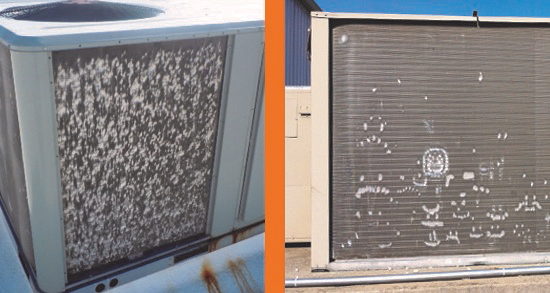
Art is everywhere you look. And, while art is wonderful and adds beauty and enjoyment to the world, there are places where you would rather not have someone express their creativity. One of those places is in the fins of the condenser coils of your air conditioning unit. The closely spaced aluminum fins are extremely pliable and easily formed into whatever image the heart desires. While the average person might look at the condenser coil artwork as perhaps interesting or unique, as an HVAC design engineer, I just see dollars wasted.
The problem with this spontaneous art form is that, as the fins get damaged and compressed closely to one another, the surface area by which the unit rejects its heat is decreased and the efficiency and cooling capacity of the unit is reduced. While it is possible to comb the fins back out to their original glory and efficiency, there would be significant labor cost to routinely check and repair the fins. Fortunately, there is a simple and economical solution to prevent this problem. Most (if not all) HVAC equipment manufacturer’s offer a hail guard accessory for their units which helps prevent foreign objects (whether it be hail, sticks, rocks, or would-be artist) from getting close enough to the fins to damage them.
Unfortunately, these hail guards are often viewed as an unnecessary expense by architects and business owners who are trying to keep construction costs to a minimum. It can also be especially hard to convince people of their usefulness in climates where hail is not a common weather phenomenon. However, it only takes a few maintenance calls to repair the bent fins before the labor cost exceeds the original cost of the hail guard accessory. In engineering the experience for the building owners, facilities crew, or even the HVAC unit itself, we recommend a robust approach. A nice looking hail guard, is a higher form of art than any of the handiwork we’ve seen pressed into the cooling fins of units we find in the field.

